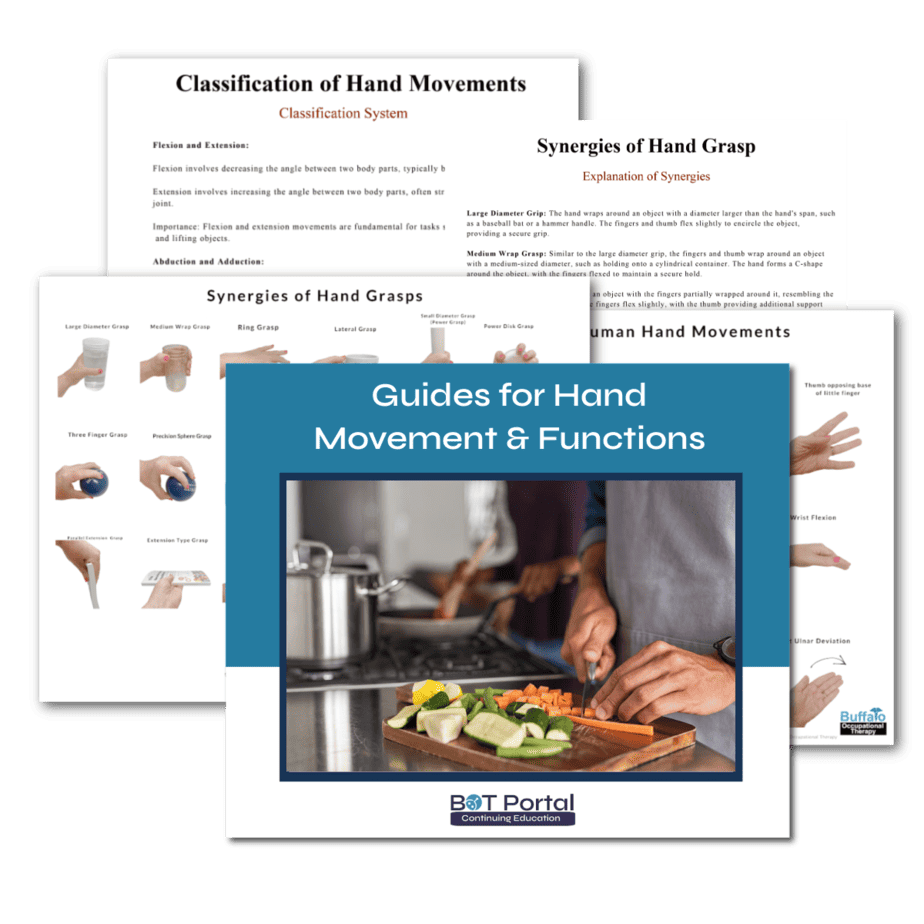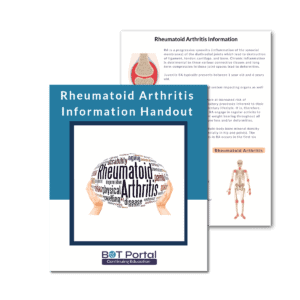Description
Kinematic Synergies and Classifications of Movement of the Hand
Illustration of Functional Hand Movements to Guide Rehabilitation
Download the pdf for “Kinematic Synergies and Classifications of Movement of the Hand” to use as a tool when performing occupational and activity analysis as well as a tool to guide and education your patients through a plan of care improving hand function. This has been an invaluable resource to the practitioners of Buffalo Occupational Therapy!
More Information:
The synergies of hand grasp and the kinematics of the hand play a crucial role in occupational performance, influencing individuals’ ability to engage in a wide range of daily activities. By understanding these concepts, occupational therapists can tailor interventions to address deficits and optimize functional outcomes for their clients.
Hand grasp synergies refer to the coordinated actions of muscles and joints in the hand and forearm that work together to achieve a particular grasp or grip. These synergies are essential for tasks such as holding objects, manipulating tools, and performing fine motor activities. Different types of hand grasps, such as power grasp, precision grasp, and tripod grasp, rely on specific muscle groups and joint movements to achieve stability, precision, and control.
Understanding hand grasp synergies allows occupational therapists to assess individuals’ hand function and develop targeted interventions to improve grasp strength, coordination, and dexterity. By identifying deficits in hand grasp synergies, therapists can implement exercises and activities to strengthen muscles, improve range of motion, and enhance hand-eye coordination, ultimately improving individuals’ ability to perform activities of daily living.
Similarly, kinematics refers to the study of the motion of the hand and its joints. The kinematics of the hand involve complex movements of the fingers, thumb, and wrist, which are essential for tasks such as writing, typing, and manipulating objects. By analyzing the kinematics of hand movements, occupational therapists can identify limitations in range of motion, coordination, and precision.
Interventions targeting hand kinematics may include exercises to improve finger and wrist flexibility, proprioception training to enhance joint awareness, and functional activities to promote hand-eye coordination and motor control. By addressing deficits in hand kinematics, therapists can help individuals regain or improve their ability to perform specific tasks essential for independent living and participation in daily activities.
Overall, understanding the synergies of hand grasp and the kinematics of the hand is essential for occupational therapists to effectively assess and address hand function deficits. By implementing targeted interventions to improve grasp strength, coordination, range of motion, and precision, therapists can empower individuals to achieve their goals and engage in meaningful occupations with confidence and independence.
What’s included?
- 2 illustration sheets to laminate on the kinematic synergies of hand grasp and classification
- 2 written explanations of the illustration
Other helpful links:
Check out BOT Portal: Resource Site for Occupational Therapy Students and Practitioners
Executive Function & Cognition Treatments for Occupational Therapy
Executive Function & Cognition Treatments for Occupational Therapy




